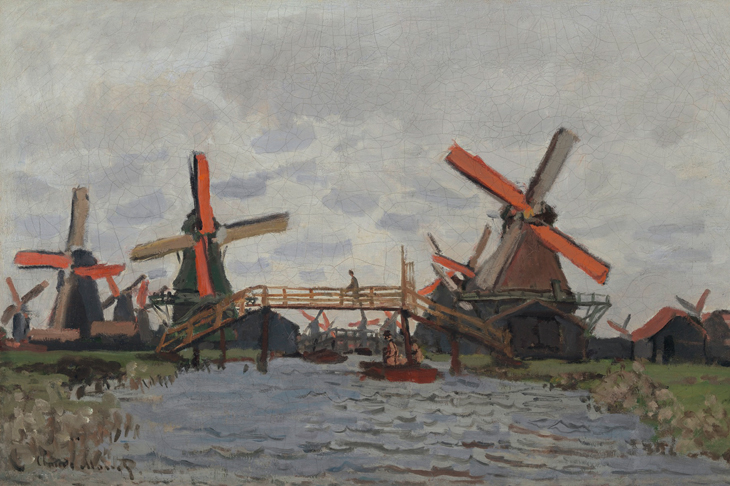TEFAF may be the main attraction in Maastricht this March, but the fair also offers the opportunity to explore a wide range of exhibitions and events both within the city and further afield. Here is our pick of the best fairs and museum shows in the region.
Now in its 11th year, the popular Maastricht Antiquarian Book & Print Fair (MABP) returns to the gothic church in the Vrijthof from 9–11 March. This year the event takes ‘Cartography’ as its theme, and more than 25 specialist booksellers present everything from first editions to antique maps. Paul Bremmers brings a rare 18th-century wall map depicting Utrecht and parts of Holland, engraved by G. Hoet and T. Doesburg. Other highlights include a lithograph by Picasso, dated to 1957 and on offer at Mappa Maps.
Guus Röell welcomes visitors to his annual Open House from 7–18 March. Alongside guest exhibitors Allan Hare and Alvaro Roquette & Pedro Aguiar-Branco, Röell presents an exhibition of curated furniture, Kunstkammer objects and paintings. Places can be reserved at Röell’s lively collectors’ dinners, which are held at his home on Tongersestraat every evening during the fair.
The Ponton de la Félicité at Asnières (1886), Paul Signac. Van Gogh Museum, Amsterdam
While in Maastricht, don’t miss ‘Top Ten on Tour: Masterpieces acquired for the Netherlands thanks to the BankGiro Lottery’ at the Bonnefantenmuseum. This travelling exhibition, which started its run last autumn, has toured to six museums in the Netherlands. A collaboration between the Kröller-Müller Museum, the Van Gogh Museum, the Rijksmuseum and the Mauritshuis, the 10 works on display were all acquired during the period 1999–2006 and include pieces by Rembrandt, Steen, Signac, Picasso and Monet. The Bonnefantenmuseum is the tour’s final stop, with the exhibition running from 3–25 March.
Fine Art Fair Eurantica returns to the Brussels Expo for its 37th edition from 22–25 March. Bringing together some 90 exhibitors, the fair takes as its theme ‘Paris–Bruxelles’, and features everything from Old Master and post-war painting to jewellery and furniture. Brussels also sees the launch of contemporary design fair Collectible, which takes place at the Vanderborght building from 8–11 March and whose selection committee includes Tony Chambers, brand and content director of Wallpaper, and Pascale Mussard, a director at Hermès.
The killing of the Niobids , Abraham Bloemaert. Courtesy Galerie Lowet de Wotrenge
In Antwerp, Galerie Lowet de Wotrenge hosts the exhibition ‘Northern Works on Paper, 1550–1800’ (until 25 March). With a particular focus on Dutch and Flemish masters, the exhibition features almost 50 works and covers a range of subjects – from landscapes and botanical studies to preparatory architectural sketches. Highlights include Abraham Bloemaert’s The Slaying of the Niobids and Willem van Mieris’s Perseus and Andromeda.
Still Life with Red Jug (1933), Jean Brusselmans. Courtesy Gemeentemuseum, Den Haag
Jean Brusselmans
Gemeentemuseum Den Haag
Until 10 June
This exhibition focuses on the little-known Belgian artist Jean Brusselmans, bringing together around 40 of his works made in the 1930s and 1940s. It offers the chance to reassess a painter who has been confined to the margins of art history, and whose idiosyncratic style and rural subject matter have been seen in opposition to the more avant-garde experiments of his Belgian contemporaries.
Room in a Dutch House (c. 1665–75), Pieter Janssens Elinga. © State Hermitage Museum, St Petersburg
Dutch Masters from the Hermitage
Hermitage Amsterdam
Until 27 May
For the first time, the Hermitage Amsterdam mounts an exhibition of Dutch masters drawn from the collection of the State Hermitage in St Petersburg – one of the world’s leading collections of Dutch Golden Age painting outside the Netherlands. Among the 63 works on show are six paintings by Rembrandt, as well as works by lesser-known artists such as Pieter Janssens Elinga.
Lot and his Daughters (c. 1665–67), Jan Steen. Städtische Wessenberg-Galerie, Konstanz
Jan Steen’s Histories
Mauritshuis, The Hague
Until 13 May
The 17th-century artist Jan Steen is known for his witty depictions of domestic life. This exhibition instead focuses on his less well-known history paintings, and the broad range of his subjects, which draw on classical myth and stories from the Bible. Among the 21 paintings on display are Moses and Pharaoh’s Crown (c. 1670) and Lot and his Daughters (c. 1665–67).
Opus F4 (2014), Rasheed Araeen. Courtesy the artist
Rasheed Araeen: A Retrospective
Van Abbemuseum, Eindhoven
Until 25 March
This comprehensive survey spans six decades of Araeen’s career. It takes in his early experiments in Pakistan in the 1950s and, following his move to London in 1964, his politically charged work of the ’70s and ’80s. His more recent geometric paintings are also included. Araeen’s sustained questioning of European modernism is further examined in his writing and curatorial projects.
View of the Harbour from Mons Klint (1850), P.C. Skovgaard. Skovgaard Museet, Viborg
Romanticism in the North:
From Friedrich to Turner
Groninger Museum, Groningen
Until 6 May
This welcome overview of Northern European landscape painting considers depictions that are as much spiritual as they are documents of the world. This turn inwards is examined in more than 95 works from the Netherlands, Germany, Scandinavia and the UK, and includes work by Johan Christian Dahl alongside Turner and Friedrich.
Still Life with Artichokes and a Talavera Vase of Flowers (c. 1650–60), Antonio Ponce. Photo: Joaquin Cortes; © Collection Albello
Spanish Still Life
BOZAR, Brussels
Until 27 May
This large-scale exhibition traces the development of the still life in Spain from the 1600s to the present day. Featuring 80 works – many on loan from Spanish museums – the show begins by examining the simple style of 17th-century bodegónes, later considering works by Velázquez, Goya and Zurbarán. Modern interpretations of the genre come courtesy of Picasso and Miró.
From the March 2018 issue of Apollo. Preview and subscribe here.
